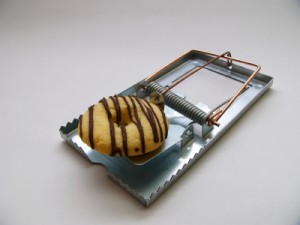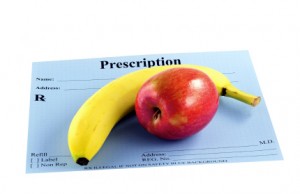Healthy Diabetic Menus: The Basics of Diabetic Meal Planning
If you have recently been diagnosed with type II diabetes, you probably have a lot of questions about how this complex disorder will affect your life. You may be particularly concerned about the necessity of following a restrictive diet that prevents you from eating many of the foods you enjoy.
While it is true that you will most likely need to make some changes to your eating habits, the good news is that
you do not necessarily have to purchase special diabetic meals or follow a specific “diabetic” diet. By learning to eat a wide variety of healthy foods and limiting food items that are really not good for you, you will be well on your way to getting your diabetes under control.
Maintain a Balanced Diet
The American Diabetes Association recommends that individuals with type II diabetes follow the FDA food pyramid guidelines for nutrition. Try to incorporate the foods listed here into your daily meal planning:
- Whole grains, beans, and starches – 6 servings
- Fresh vegetables – 3 to 5 servings
- Fresh fruits – 2 to 4 servings
- Proteins (such as fish, chicken, lean red meats, cheese, and tofu) – 2 to 3 servings
- Low-fat milk or yogurt – 2 to 3 servings
- Fats and sweets – only consume in small amounts.
Avoid foods containing refined flour or sugar; stick to whole grain breads and pasta, and use brown rice instead of white. Use heart-healthy oils like olive or canola oil for cooking, and try a vegetable oil spread instead of butter on your bread. Limit or eliminate sugary drinks, and learn to drink your tea or coffee with low-fat milk instead of cream and sugar. While an occasional glass of wine or a mixed drink won’t hurt, it is best to limit your consumption of alcohol.
Monitor Your Carbohydrate Intake
Despite the current popularity of low-carb diets, severely limiting your carbohydrate consumption is rarely a good idea. Glucose (blood sugar), which comes from foods containing carbohydrates, is the body’s primary source of fuel. We need carbs for energy, as well as the important vitamins, minerals, and dietary fibers they provide.
The best way to control your glucose levels is to consume similar amounts of carbohydrates every day. Your doctor can help you to determine what is the right amount for you. Carbs can be found in a wide variety of foods, including whole grains, cereal, pasta, green leafy vegetables, legumes, and fruits such as apples, bananas, and oranges.
Remember to avoid foods that are high in sugar or contain refined, white flour – these are lacking in any nutritional value and only add empty calories to your diet.
Practice Portion Control
Knowing how much of a particular food item constitutes a “serving” can be tricky. While some people do strictly monitor their portions by weighing and measuring, there is an easier (and more convenient) way to decide how much of an item you should eat. The following visual example should help you to eat healthy foods in appropriate amounts.
Non-starchy vegetables should take up 1/2 of a round dinner or luncheon plate. Non-starchy vegetables
include things like:
- Salad greens
- Onions
- Tomatoes
- Cucumbers
- Broccoli
- Carrots
Starches and grains should fill up about 1/4 of your plate. These include:
- Potatoes
- Whole wheat bread
- Yams
- Corn
- Peas and beans
- Rice
Proteins should fill up the remaining 1/4 of your plate. Try lean proteins such as:
- Lean beef or pork
- Chicken or turkey breast (with the skin removed)
- Broiled fish
- Eggs
- Tofu
Fruits can be included in any meal; a serving of whole fresh fruit equals about 1/2 cup, or about the size of a
baseball.
Sample Menu
Now that you have a basic idea of what you should be eating to keep your blood sugar in check, here is a sample menu for a day.
Breakfast 
- 1 or 2 slices of whole grain toast with margarine
- Sliced tomato with salt and pepper
- 1 egg, boiled or poached
- Orange juice or fresh fruit
Snack
- Fresh vegetable slices or fruit
- 1/2 whole grain bagel
- Glass of milk
Lunch
- 2 oz portion of grilled or broiled tuna
- Green salad with low-fat dressing
- Brown rice
- Fresh fruit
Snack
- Peanut butter or cheese with whole grain crackers
Dinner
- Lean broiled beef
- Steamed kale with lemon juice
- Baked potato with low-fat sour cream
- Corn
Dessert
- Fresh fruit with low-fat yogurt
In the beginning, all of this may seem overwhelming, especially if you have been used to eating fast food meals and processed, prepackaged meals. But with a little bit of practice, eating healthy will seem like second nature to you. Add regular exercise to your daily routine, and you will soon have your blood sugar – and your weight – under control. Chances are that you will feel better and healthier than you ever have before.



The optimal way to plan a diabetic diet meal is to first assess the nutritional needs of a person with diabetes and the amounts of fat, protein, carbohydrate, and then calculating the corresponding total calories needed per day.
My family is diabetic so that meal plan will be helpful for them, thanks for the post
Hi there I appreciated your post. I think that it is necessary when talking about diabetes to at least bring up natural treatments that have been proven to be effective in managing high blood sugar. Several natural herbs can be including in a diabetics treatment that will help maintain a wholesome sugar level.
I’ve found that corn products raise my glucose level so I have eliminated corn from my diet. I just substitute another veggie in place of the corn.
I agree on the corn, it does contain quite a bit of natural sugars. I grew up with diabetes in the family my father and both his parents were diabetic and then my mother became diabetic at the age of 70. so I am familiar with how it can affect the body. recently my husband had pancreatic surgery and it has made him diabetic and we are learning about the foods, things have changed so much since years ago. you have to be more careful about the acceptable foods you eat because some of the foods they recommend are actually more harmful to you than what they consider bad for you. Take butter and margarine for example. did you know that margarine contains a form of plastic? I would rather put something natural , such as butter over chemically produced products that contain harmful ingredients (plastic is made from petroleum). Sugar vs NutraSweet is another , aspartame contains a chemical that is known to cause brain damage,(same stuff they put in antifreeze) and I’m a classic case of that every time I consume it , I have problems concentrating and remembering and maintaining my temper. I stick with natural sweeteners such as Agave, but beware some brands contain processed sugar as well. Some say stevia is better, but it can cause reactions also. I tried it once and it made me extremely hyper and wired for several hours.
Please suggest a diet list with does n don’t things n time table for
food.